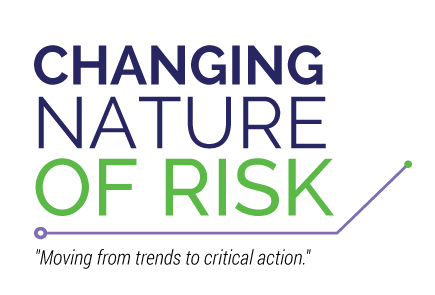Smart Homes & Buildings
|
Smart Homes and Buildings Industry Maturity Index: This is happening now, will have short term implications in discounts and look for advancement in the long term for risk mitigation. Why this is important: This has the potential of having a significant impact on underwriting, claims, and loss mitigation for property insurance in the near future.The Smart Homes & Buildings technologies will allow the insurance industry to monitor, in real-time, the health and status of the insurance exposure (homes and buildings being one of the largest combined assets covered by insurance), as well as use analytics for identifying loss potential prior to a loss.The ACT CNoR workgroup feels that our industry could have a very positive influence in this area and that Smart Home & Buildings if handle properly can positively impact on our industry.Without the appropriate research and management there is potential for negative effect as well, with additional competition and unexpected liabilities. What is it? A home or business equipped with lighting, heating, and electronic devices that can be controlled remotely by phone or computer. “You can contact your smart home on the Internet to make sure the dinner is cooked, the central heating is on, the curtains are drawn, and a gas fire is roaring in the grate when you get home” It is the devices, systems and accessories added to a home or business that have network connectivity so the owner or other designees can monitor, update and change settings. Many of these devices have learning capabilities so they change the temperature at a certain time or when you open the garage door, create grocery lists, etc. Broad Implications/Uses: Creating the capabilities to monitor and control your property from anywhere you have internet access;
There are a variety of technologies on the market now, most if not all rely on an internal network (Mostly wireless) to drive the devices.There is no central or common communication so all devices have to be from the same manufacturer.However, there are several companies working on centralized home automation hubs, which IT device manufacturers to tap into existing services.Apple’s ‘HomeKit’ is one example. Economic Impact(s): Safety with visibility into the home. Risk of hacking of visibility into home, privacy issues. Mitigation of loss – reduction of overall industry Claim and Claim Adjustment Expenses. Manufacture revenue increase do to replacement sales. Insurance Industry Implications:The Connected Property can have positive and negative impacts to many areas of our industry;
Recommended Actions: Agents –
Carriers –
Vendors –
Examples/Resources: Options: Internet of things – The Connected Home McKinsey – State of the Market: Connected Home and Hero Devices Potential issues: CheatSheet – Smart Homes: 4 Potential Problems You May Run Into Fortune – Smart Home Device Companies Need To Understand the Customer General knowledge: iControl Networks – State of the Smart Home Report Evolving Technology Caution: It is felt that over time, Smart Home technologies will offer many benefits to the consumer and the insurance industry.However, reader should note, that while there are existing Smart Home products on the market, and a small number of insurance carriers offering discounts for their use, Smart Home technology is relatively new and rapidly evolving.Many of the major technology companies, including Apple and Google, have been developing “Smart Home Hubs” to attract Smart Home products and services into their eco-systems.However, these have been slow to evolve, and have not been rapidly adopted by 3rd parties. Additionally, early leaders in the Smart Home arena, such as Google’s Nest Learning Thermostat, appear to be stumbling with recent shakeups in the company, and a lack of overall direction.Further, Google recently shuttered “Revolv”, maker of a Smart Home hub that could control lights, doors, alarms, etc. All of this is reflective of a young, immature market.However, the potential benefits are so great for Smart Home technology, we will continue to see considerable investment into many new products and services.Within the past year, we have seen several insurance companies invest in Smart Home startup companies, or sponsor incubators for developing new Smart Home product and companies. Other: There are a lot of questions about who is responsible for failures in software, hardware, connectivity, and power outages should they cause damage. If the carrier is part of the distribution of these products they should be aware and define who is liable. Call to Action:
Authors: Jerry Fox and Doug Johnston To download a PDF of this Risk Advisory: ACT CNoR Advisory – Smart Homes-Buildings – 2016Jul22.pdf |
